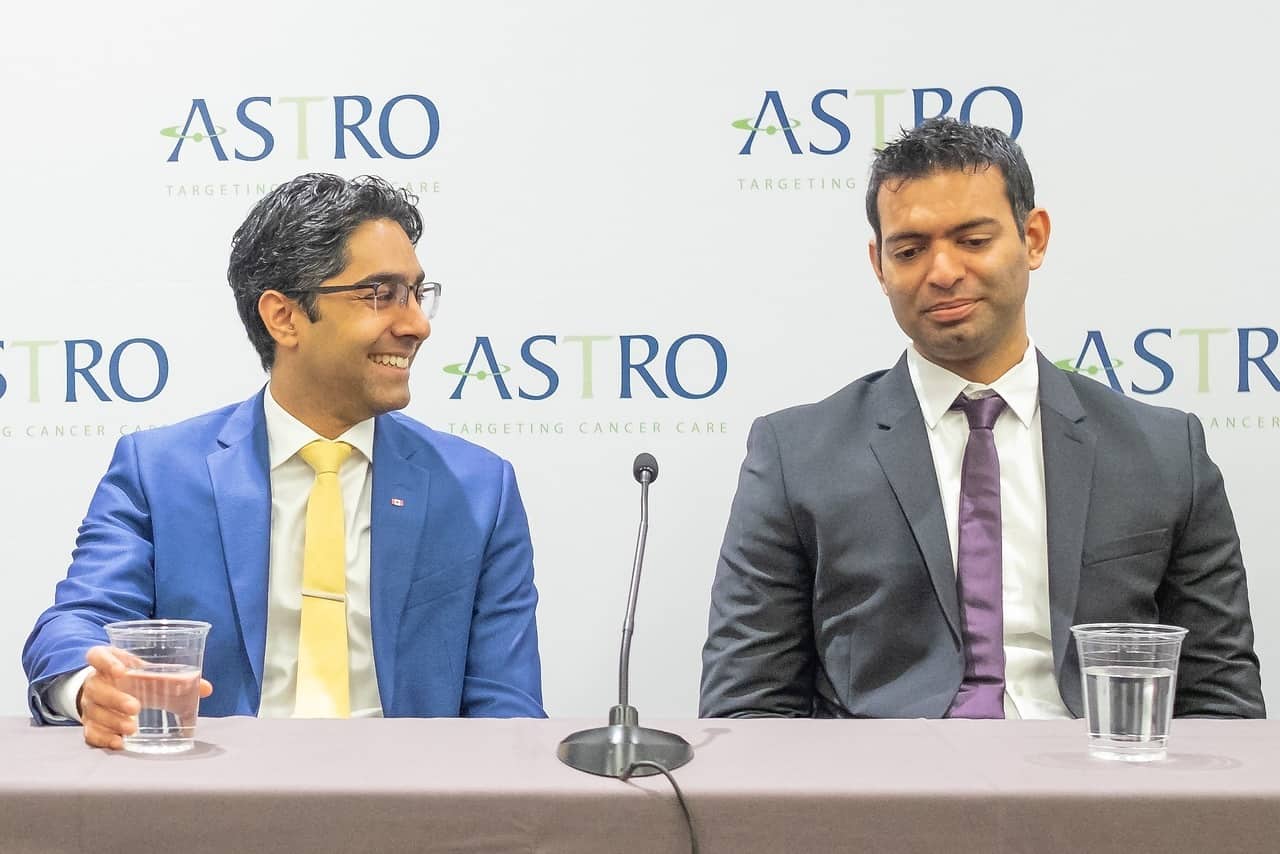
The ASTRO Annual Meeting takes place this week in San Antonio, Texas. Among the top-rated abstracts highlighted at the meeting, several presented the latest findings from studies of stereotactic ablative radiotherapy (SABR). SABR, also known as stereotactic body radiation therapy (SBRT), is a precision treatment that delivers high radiation doses in a single, or just a few, treatment fractions. Here is a small selection of the studies presented at this year’s event.
High doses improve survival in ‘incurable’ patients
Metastatic cancer is generally considered incurable. A multi-centre trial has challenged this idea by demonstrating that SABR greatly increases survival in patients with a variety of oligometastatic cancers.
“Traditionally, when a patient had a cancer that spread to other parts of their body, such as to their bones or brain, they were considered to be incurable,” explains lead author David Palma from Lawson Health Research Institute. “But there’s a theory that if a patient only has a few spots of cancer returning, those spots could be killed with radiation or surgery to improve their survival. Now we’ve been able to show, for the first time in a randomized trial, that high-dose radiation can effectively treat these limited recurrences.”
The trial, called SABR-COMET, included 99 patients with a range of cancer types and up to five metastatic lesions. Patients were randomized at a 1:2 ratio into two treatment arms: palliative standard-of-care (SOC) treatment; or SOC plus SABR to all metastatic lesions.
Patients who received SABR lived considerably longer than those who did not, with a median overall survival of 41 months, compared with 28 months in the SOC arm. SABR also doubled the time that patients lived without cancer growth, from six months for those who received standard radiation therapy to 12 months in the SABR arm.
Treatments with SABR led to more negative side effects, with 30% of patients experiencing grade 2 or higher adverse events, compared with 9% in the SOC group. There were, however, no differences in quality-of-life measures between the two groups.
“Stereotactic radiation therapy needs to be delivered carefully and by an experienced team, and there is a small risk of very serious side effects, as well as mortality,” says Palma. “But overall, for patients whose cancers have spread, and who are not expected to survive otherwise, the overall survival benefits of SABR appear to outweigh these risks.”
The team is now planning a follow-up study that will enrol patients with up to 10 metastatic lesions. “We don’t know the upward limit of how many tumours can be treated with SABR,” says Palma. “The concern is the amount of radiation exposure a patient can tolerate. We don’t know yet what the safe boundaries are. We’ve been very conservative, as this is a new technology.”
Prostate cancer patients benefit from SBRT
A growing body of evidence supports the use of SBRT to treat low- and intermediate-risk prostate cancer; but some concerns still exist regarding its long-term efficacy and safety. To address these concerns, a research team has analysed data from 10 institutional trials and two large multi-institutional studies of SBRT for prostate cancer.
The results confirmed that SBRT has an efficacy and toxicity profile that compares favourably with conventional radiotherapy and brachytherapy. “This study should allay the fears of those who prefer to undertake a shorter treatment course that they can do so safely and with the same, positive outcomes they would receive from a longer course of treatment,” says lead author Amar Kishan from UCLA.
Radiotherapy is typically delivered in small daily doses over a multi-week period, but because prostate cancer cells appear unusually sensitive to higher daily doses of radiation, it’s possible to compress the treatment down to 4 or 5 treatments in about 1.5 weeks, Kishan explains.
The team examined the outcomes of SBRT in 2142 prostate cancer patients: 55.3% with low-risk disease; 32.3% with favourable intermediate-risk disease; and 12.4% with unfavourable intermediate risk disease. Most patients were treated daily or every other day with doses of 33.5–40 Gy delivered in four or five fractions. A small percentage received concurrent androgen deprivation therapy.
None of the patients died from prostate cancer. Overall, 6% experienced recurrence and 0.6% experienced distant metastases. Seven years after treatment, 95.5% of patients in the low-risk group, 91.4% in the favourable intermediate-risk group and 85.1% in the unfavourable intermediate-risk group were free from biochemical recurrence. Overall survival rates at seven years were 91.4%, 93.7% and 86.5%, for low-risk, favourable and unfavourable groups, respectively.
Severe toxicities were rare: 0.6% of patients experienced grade 3 acute genitourinary (GU) toxicities and 1.9% experienced grade 3 late GU toxicity. There was just one late grade 4 GU toxicity and one late grade 4 gastrointestinal toxicity.
“These numbers are identical, if not superior, to other types of more commonly used radiation techniques,” says Kishan. “There is no evidence of worse toxicity with SBRT. We have shown that this method is both safe and effective and should be a standard treatment option for patients with low- and intermediate-risk prostate cancer.”

SABR is effective for patients with only one kidney
Renal cell carcinoma (RCC), the most common form of kidney cancer, is typically treated surgically — but SABR is emerging as a potential alternative. Now, an analysis of the largest dataset of solitary kidney patients to receive SABR has shown that it is as safe and effective for patients with one kidney as for those who have two.
“Although RCC historically has been considered resistant to conventional radiation therapy, the high doses and high precision achievable with SABR overcome this resistance,” says lead author Rohann Correa from London Health Sciences Center. “Kidney SABR is thus emerging as a versatile, non-invasive outpatient treatment requiring one visit or a few visits.”
Correa and colleagues analysed data from 223 patients who underwent renal SABR at nine institutions, 81 of whom had a solitary kidney. While total dose and number of fractions were lower in the solitary cohort, the median biologically-effective dose was 87.5 Gy in both groups.
With a median follow-up of 2.6 years, SABR provided 98% two-year local control and 98% two-year cancer-specific survival for RCC patients with a solitary kidney. These rates were not significantly different from those for patients with two kidneys. Overall survival was similar for both cohorts: 81% for the solitary group and 82% for the bilateral group.
SABR slightly impacted renal function, with a similar decline in estimated glomerular filtration rate (eGFR, a measure of kidney function) for both cohorts. None of the solitary kidney patients required dialysis, while six in the bilateral cohort did. “We were somewhat surprised that SABR could achieve such a high local control rate without more significantly impacting renal function in the solitary kidney setting,” says Correa.
“Treatment of RCC in the solitary kidney setting poses a unique management challenge, since a careful balance of minimizing nephron loss and maximizing cancer control is essential,” Correa concludes. “Recognizing the challenges of randomized controlled trials in this unique and somewhat-rare population, we hope that our large, international dataset will significantly advance the paradigm of kidney SABR, increasing awareness and access for patients facing this challenging management scenario.”



